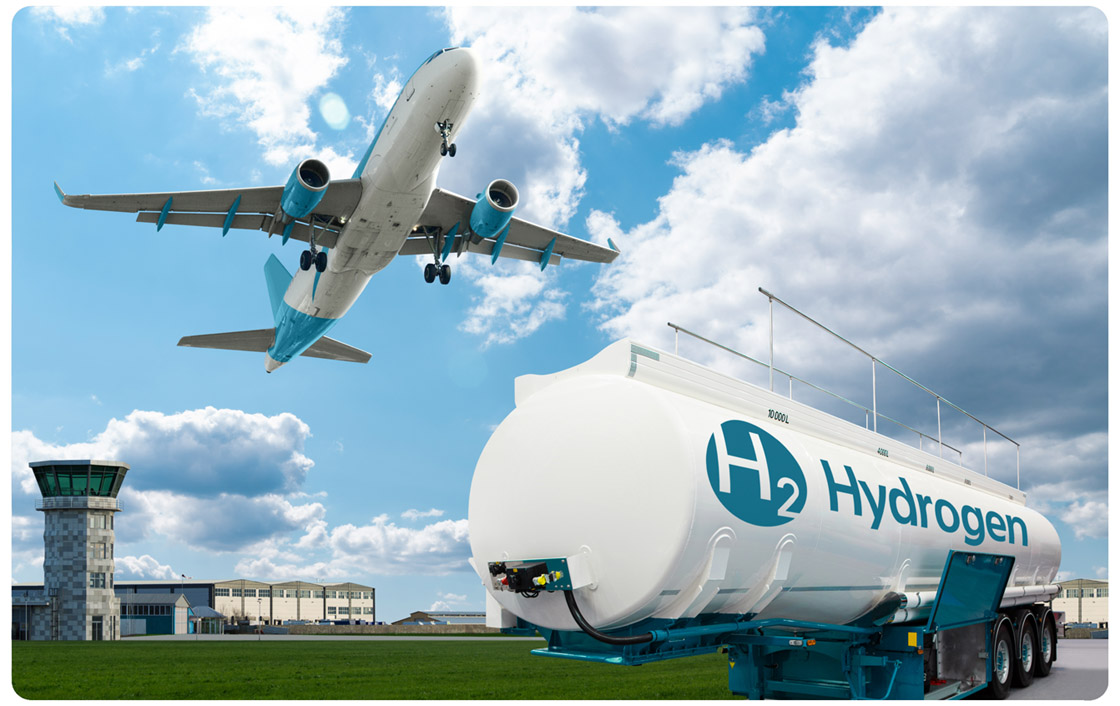Is green hydrogen worth the hype?
P ut simply yes. Green hydrogen is a critical enabler for aviation to reach "net zero" or better: climate neutrality. As an on-board energy source, it can be a real game changer and is also an essential building block for the synthetic, drop-in "e-fuels" that will need to replace fossil fuel for today's aircraft.
ut simply yes. Green hydrogen is a critical enabler for aviation to reach "net zero" or better: climate neutrality. As an on-board energy source, it can be a real game changer and is also an essential building block for the synthetic, drop-in "e-fuels" that will need to replace fossil fuel for today's aircraft.
As long as we are using "green" hydrogen, or any other variant with no carbon emissions during its production, hydrogen-based propulsion in aviation will have "true zero" CO2 emissions. Latest estimates show that hydrogen combustion could reduce the climate impact of flight by up to 75% (depending on the extent of non-CO2 effects), and hydrogen-based fuel-cell electric propulsion by up to 90%.
When combining hydrogen with CO2 captured from the atmosphere, the resulting e-fuel will still have "tailpipe emissions" of CO2 but the life-cycle effect of recapturing this can lead to 80-90% reduction in the net emissions of this greenhouse gas.
Hence using these fuels can reduce aviation’s total climate impact by up to 60% (with similar caveats in terms of the non-CO2 component in the overall warming effects). As these figures show, adapting to e-fuels brings significant benefits, especially considering there is no need for new infrastructure and only modest modifications to aircraft and engines. But hydrogen as on-board energy source has the potential to take us further towards climate neutrality, and to do so with less overall energy demand.
A compelling alternative, if we get it right!
What are the three main challenges to overcome in aviation research regarding hydrogen?
We are facing a triple helix of challenges: aircraft technology, airport infrastructure and supply of green liquid hydrogen (LH2). To make this work we need a system-level transformation to seek and deliver realistic solutions.
Let's take aircraft technology. To provide just a couple of examples: how can we store LH2 on board at -253 degrees Celsius? How can we manage the transfer of liquid to gaseous hydrogen in the fuel system?
Turning to supply. There's no doubt that as we move forward in the green transition global demand for renewable energy and clean hydrogen will grow exponentially notably amongst "hard-to-decarbonise" sectors such as steel, cement, maritime and aviation. While hydrogen-based propulsion, using fuel cell or gas turbine technology is potentially a key enabler to climateneutral aviation, supply of renewable energy and subsequent production of green hydrogen will be critical to their market adoption. How can we guarantee there is an adequate and reliable supply for all?
Finally, airports need to ensure infrastructure is in place in tandem with the fleet introduction, and that efficient and safe refuelling of LH2 is feasible. Clean Aviation has recently joined AZEA, the Alliance for Zero- Emission Aviation which aims to prepare the aviation ecosystem for hydrogen- and electric-powered aircraft.
CAJU's research activities are based on three thrusts. Only one of them is linked to hydrogen. Why not dedicate all efforts to H2?
Hydrogen offers enormous potential but given the scale of the technical, infrastructural and financial challenges we cannot afford to bet on one horse. Regardless of whether green hydrogen is used in drop-in SAF or directly on board as an energy source, the air transport system will require very significant volumes of green hydrogen (and renewable energy to produce this), to support its push to "climate neutral".
Our ambition is to drive a stepchange in aircraft performance: we need to squeeze every last ounce of efficiency out of aircraft and fleet performance. We are targeting at least 30% for short-medium range aircraft and 50% for regional, compared to today's very best models. We also want to ensure entry into service before 2035 and ensure that 75% of the world's fleet is composed of ultra high-performance aircraft by 2050. Coupled with low net-carbon SAF this already would lead to a new breed of aircraft with -85 to -90% less net-CO2 emissions. Coupled with the use of LH2 "true zero" carbon is in sight.
As the introduction of a disruptive new energy source like hydrogen is likely to take up to 50 years to permeate the full aviation system, we need to play a long game here. Super-efficient aircraft flying on dropin SAF will most likely need to bridge the gap for several decades and may well remain even beyond the end of the century in some specific use cases like (ultra) long haul flights.
Concerning hydrogen, where will Clean Aviation concentrate its efforts?
A quarter of the EU funding currently awarded will be dedicated to H2 research focusing specifically on H2 storage and propulsion systems, notably gas turbine technology and fuel cells as these are key enablers for H2-powered aircraft. This share of the overall research mix is in line with the Strategic Research and Innovation Agenda ensuring a balanced and "measured risk" approach.
Synergistic efforts are gaining momentum in national research and innovation programmes and the Clean Hydrogen Partnership – a fellow Joint Undertaking under Horizon Europe – will also bring important contributions.
